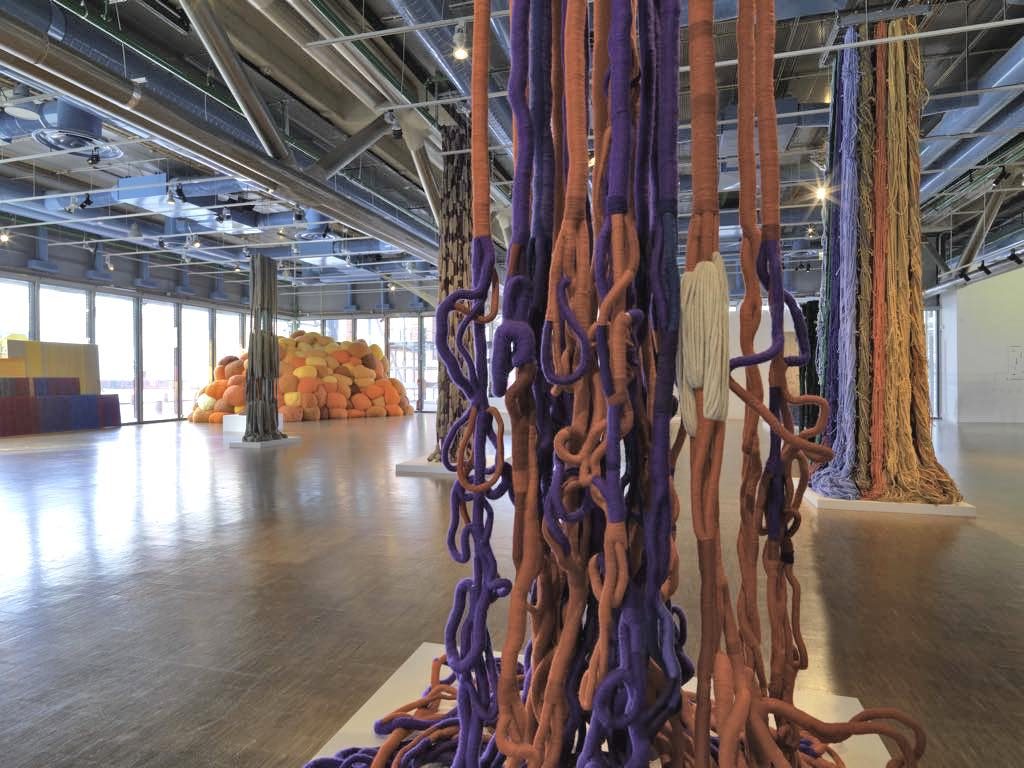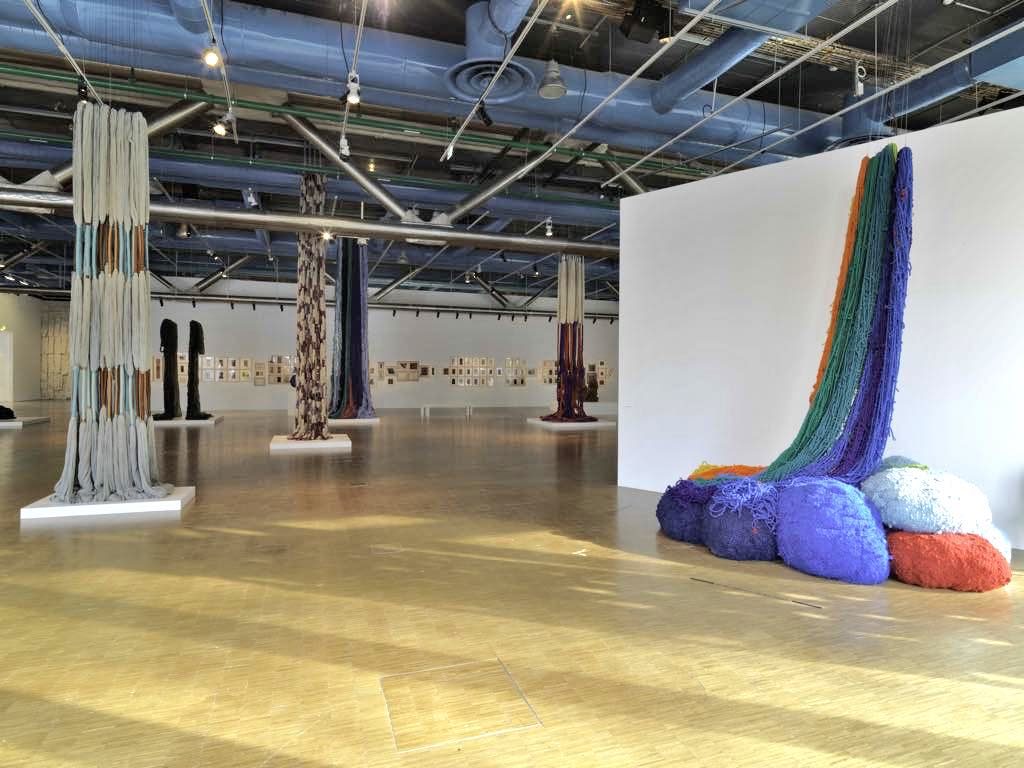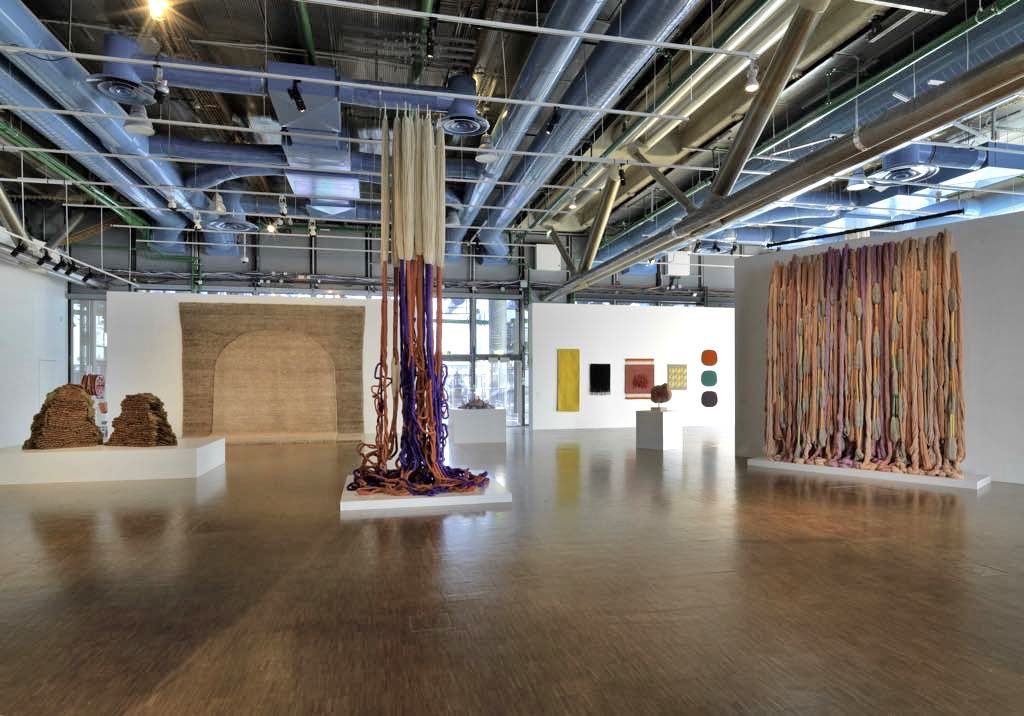
Sheila Hicks, the subject of a solo show at the Centre Pompidou called “Sheila Hicks: Life Lines,” defines herself as a “contemporary fiber artist.” She is an artist who defies categories, using yarn, once scorned as a “woman’s medium” in ways few traditional weavers ever considered yet taking inspiration from pre-Columbian and other indigenous weaving techniques (she has traveled the world to study them).
Other, seemingly opposing influences include the Bauhaus (she studied under brilliant colorist Josef Albers) and the Mexican architect Luis Barragán, who was also a genius with color. She ignores distinctions between fine art, design and decoration, creating pure works of art, decorative pieces like wall hangings and useful objects like rugs.

Like Jim Dine, whose show at the Centre Pompidou we also review this week, Hicks has a close relationship with Paris; she has lived here since the mid-1960s.
Hicks also shares with Dine a tendency to incorporate everyday objects into her works. Both her “Minimes” (highly varied miniature works that serve as a sort of laboratory) and large pieces may include such things as rubber bands, pieces of clothing and clam shells.
Her works are also as varied in form as Dine’s. The show at Pompidou takes it all in, from the monumental to the minimal, ranging from a beige “Moroccan prayer rug” to multicolored column-like sculptures, some of them nearly 20 feet high, falling from the ceiling and draping onto the floor. Then there are the piles of multicolored boulder-shaped cushions.

If the influence of the Bauhaus inspired Hicks to disregard barriers between fine art and crafts, her decision to turn away from her original vocation as an Abstract Expressionist painter and become a textile artist in the 1950s was influenced by Pre-Columbian art expert Professor George Kubler, who once wrote: “Let us suppose that the idea of art can be expanded to embrace the whole range of man-made things,” a generous statement that not only encompasses fiber art but that is also worth remembering when the debate over the artistic value of “early” or “primitive” arts comes up.
Favorite
